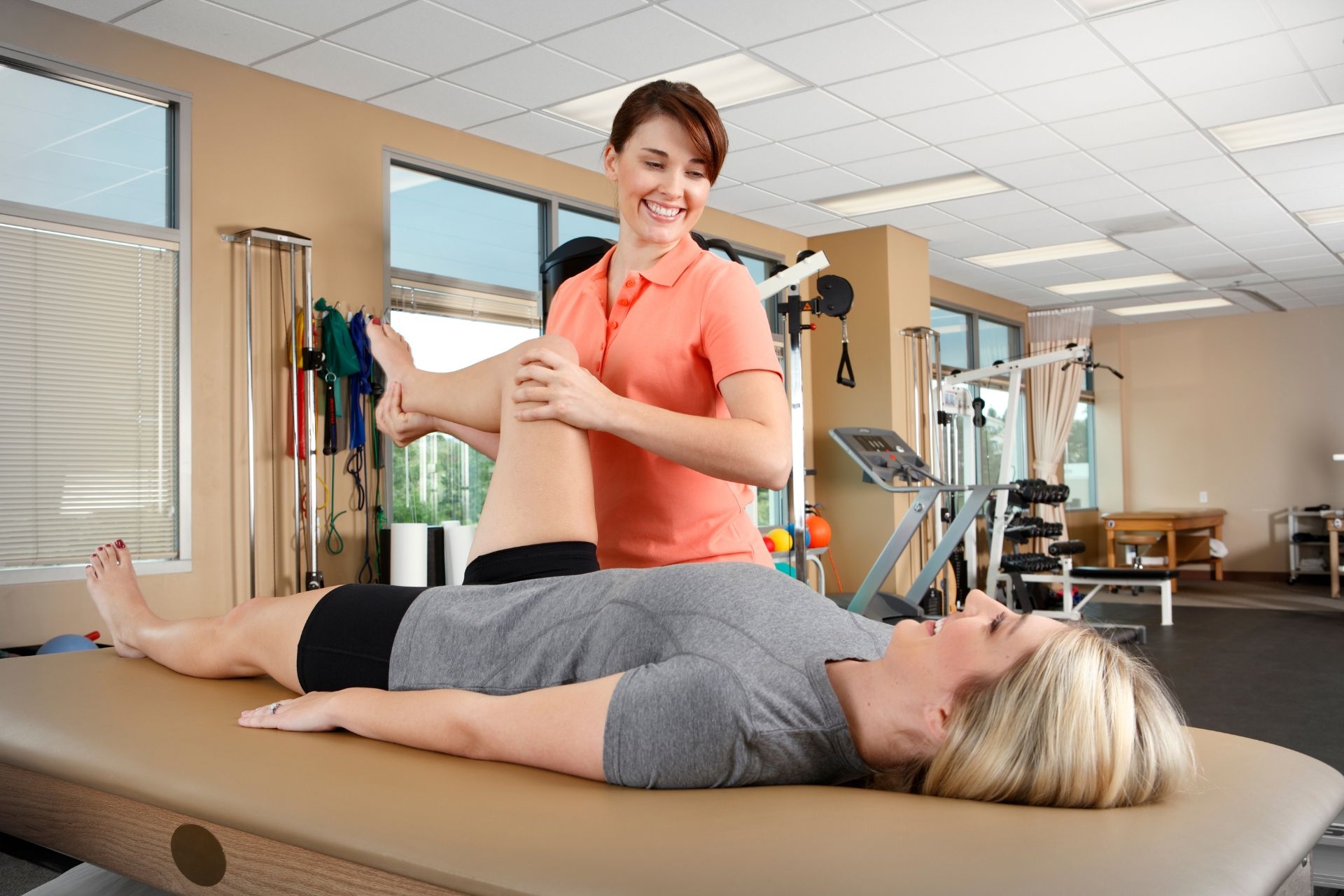

Vestibular rehabilitation is a specialized form of therapy that focuses on improving balance and reducing dizziness in individuals with balance disorders. It is a non-invasive treatment approach that aims to retrain the brain and central nervous system to compensate for any dysfunction in the vestibular system, which is responsible for maintaining balance and spatial orientation. This therapy typically involves a combination of exercises and techniques that target specific areas of the vestibular system, such as gaze stabilization exercises, balance training, and habituation exercises. By gradually exposing individuals to movements and activities that provoke their symptoms, vestibular rehabilitation helps them regain their balance and reduce dizziness.
Common symptoms that can be improved through vestibular rehabilitation include dizziness, vertigo, unsteadiness, and problems with coordination and balance. These symptoms are often associated with various balance disorders, such as benign paroxysmal positional vertigo (BPPV), vestibular neuritis, and Meniere's disease. Vestibular rehabilitation can help alleviate these symptoms by addressing the underlying causes of the balance disorder and providing targeted exercises and techniques to improve balance, coordination, and spatial orientation. By addressing these symptoms, individuals can regain their confidence and independence in performing daily activities.
The duration of a typical vestibular rehabilitation program can vary depending on the individual's specific condition and needs. In general, a program may last anywhere from a few weeks to several months. The frequency of sessions is typically determined by the severity of the balance disorder and the individual's progress. Initially, sessions may be scheduled more frequently, such as two to three times per week, and then gradually decrease as the individual's symptoms improve. The therapist will also provide home exercises and strategies that individuals can practice on their own to reinforce the progress made during therapy sessions.

Vestibular rehabilitation utilizes a variety of exercises and techniques to improve balance and reduce dizziness. These may include gaze stabilization exercises, which involve focusing on a stationary object while moving the head; balance training exercises, which challenge the individual's balance in different positions and on various surfaces; and habituation exercises, which gradually expose the individual to movements or activities that provoke their symptoms in order to desensitize the vestibular system. Additionally, therapists may incorporate other techniques such as manual therapy, relaxation techniques, and visual-vestibular adaptation exercises to further enhance the effectiveness of the rehabilitation program.
Vestibular rehabilitation can be effective for individuals with both acute and chronic balance disorders. While it is often used as a treatment for acute conditions, such as vestibular neuritis or BPPV, it can also be beneficial for individuals with chronic conditions, such as Meniere's disease or chronic subjective dizziness. The goal of vestibular rehabilitation is to improve the individual's overall balance and reduce their symptoms, regardless of the duration or severity of their condition. However, the specific exercises and techniques used in the rehabilitation program may vary depending on the individual's specific needs and condition.

When performed under the guidance of a qualified therapist, vestibular rehabilitation is generally safe and well-tolerated. However, like any form of therapy, there are potential risks and side effects. These may include temporary increase in dizziness or nausea during or after the exercises, muscle soreness or fatigue, and temporary exacerbation of symptoms. It is important for individuals to communicate any concerns or changes in symptoms to their therapist, who can then adjust the treatment plan accordingly. It is also important for individuals to follow the therapist's instructions and guidelines to ensure their safety and maximize the benefits of the rehabilitation program.
To find a qualified vestibular rehabilitation specialist in their area, individuals can start by consulting their primary care physician or an otolaryngologist (ear, nose, and throat specialist). These healthcare professionals can provide referrals to therapists who specialize in vestibular rehabilitation. Additionally, individuals can search online directories or databases of physical therapists or rehabilitation centers that offer vestibular rehabilitation services. It is important to choose a therapist who has experience and expertise in treating balance disorders and who is familiar with the latest evidence-based practices in vestibular rehabilitation.

Physical therapists play a crucial role in helping individuals with spinal cord injury improve their function and independence. They employ a variety of techniques and interventions to address the specific needs of each patient. These may include exercises to strengthen the muscles, improve range of motion, and enhance balance and coordination. Physical therapists also use manual therapy techniques such as joint mobilization and soft tissue mobilization to alleviate pain and improve joint function. They may also utilize assistive devices and adaptive equipment to facilitate mobility and independence. Additionally, physical therapists educate patients on proper body mechanics and provide guidance on activities of daily living to promote functional independence. Through their expertise and specialized interventions, physical therapists empower individuals with spinal cord injury to regain control over their bodies and enhance their quality of life.
The McKenzie Method stands out from other approaches in treating spinal disc herniation due to its emphasis on active patient involvement and self-treatment. Unlike passive treatments such as medication or surgery, the McKenzie Method encourages patients to take an active role in their recovery by performing specific exercises and movements that aim to centralize and alleviate pain. This approach focuses on identifying and addressing the underlying mechanical problem causing the disc herniation, rather than solely treating the symptoms. By utilizing a combination of extension exercises, postural corrections, and repetitive movements, the McKenzie Method aims to reduce pain, improve function, and prevent future recurrences. Additionally, this approach promotes self-management and empowers patients to take control of their own healing process, leading to long-term benefits and reduced reliance on healthcare professionals.
Physical therapists employ a variety of techniques to effectively manage pain and dysfunction in patients diagnosed with complex regional pain syndrome (CRPS). They utilize a multimodal approach that includes manual therapy, therapeutic exercises, and modalities such as heat or cold therapy, electrical stimulation, and ultrasound. Manual therapy techniques, such as joint mobilizations and soft tissue mobilizations, aim to improve joint mobility and reduce pain. Therapeutic exercises focus on improving strength, flexibility, and range of motion, while also addressing any muscle imbalances or postural abnormalities. Additionally, physical therapists may incorporate desensitization techniques, such as graded motor imagery or mirror therapy, to help alleviate pain and improve function. By tailoring treatment plans to the specific needs of each patient, physical therapists play a crucial role in managing pain and dysfunction associated with CRPS.
Vestibular rehabilitation varies in its presentation and management when it comes to peripheral and central vestibular disorders. Peripheral vestibular disorders typically involve dysfunction in the inner ear, such as benign paroxysmal positional vertigo (BPPV) or Meniere's disease. In these cases, the presentation may include symptoms like vertigo, dizziness, and imbalance. The management of peripheral vestibular disorders often involves specific exercises and maneuvers aimed at retraining the vestibular system and improving balance. On the other hand, central vestibular disorders involve dysfunction in the central nervous system, such as vestibular migraine or cerebellar ataxia. The presentation of central vestibular disorders may include symptoms like vertigo, nystagmus, and gait disturbances. The management of central vestibular disorders often focuses on addressing the underlying cause, such as medication for migraines or physical therapy for cerebellar ataxia. Overall, the approach to vestibular rehabilitation differs based on whether the disorder is peripheral or central, taking into account the specific symptoms and underlying causes associated with each type.
When designing safe and effective exercise programs for pregnant women, there are several important considerations to keep in mind. Firstly, it is crucial to take into account the individual's pre-pregnancy fitness level and any existing medical conditions or complications. This will help determine the appropriate intensity and type of exercises that can be safely incorporated. Additionally, the stage of pregnancy must be considered, as the body undergoes significant changes throughout each trimester. Modifications may be necessary to accommodate the growing belly and to avoid placing excessive strain on the joints and ligaments. It is also important to prioritize exercises that promote cardiovascular health, muscular strength, and flexibility, while minimizing the risk of falls or injury. Finally, regular monitoring and communication with healthcare professionals is essential to ensure the safety and well-being of both the mother and the baby throughout the exercise program.